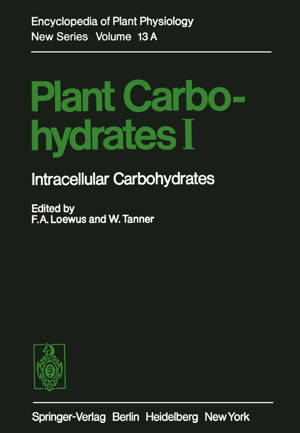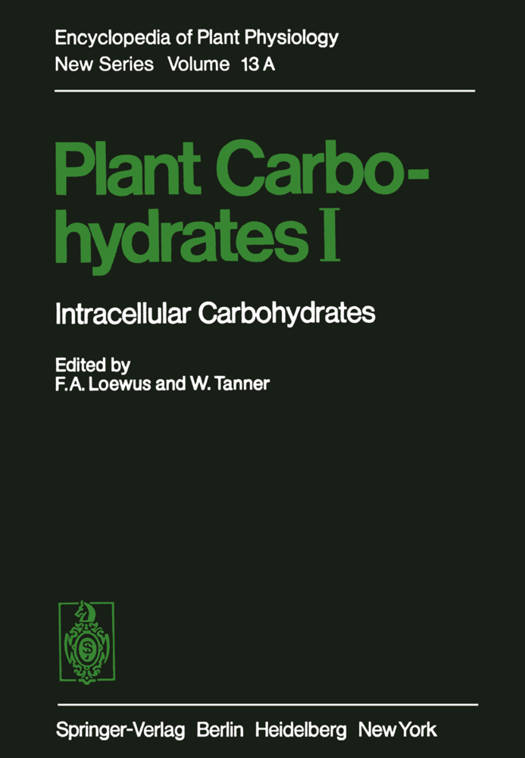
- Afhalen na 1 uur in een winkel met voorraad
- Gratis thuislevering in België vanaf € 30
- Ruim aanbod met 7 miljoen producten
- Afhalen na 1 uur in een winkel met voorraad
- Gratis thuislevering in België vanaf € 30
- Ruim aanbod met 7 miljoen producten
Zoeken
Plant Carbohydrates I
Intracellular Carbohydrates
€ 153,95
+ 307 punten
Omschrijving
The essential features of constitution, configuration, and conformation in carbo- hydrate chemistry, so well established in the . first half of this century, had yet to be exploited by those concerned with biochemical and physiological processes in plants when the original Encyclopedia appeared. Two outstanding developments, discovery of sugar nucleotides and the advent of chromatography, brought together the insight and a means of probing complexities inherent in plant carbohydrates. These advances, combined with a modern knowledge of enzymes and cellular metabolism, have provided new horizons of investigation for the student of plant physiology. This volume and its companion (Vol. 13B) present a comprehensive assess- ment of the current viewpoint in plant carbohydrates with emphasis on those aspects which impinge on physiological processes of growth and development. To accommodate the extensive amount of information to be presented, subject matter has been divided, somewhat arbitrarily, into intracellular and extracellular carbohydrates, with the latter defined as carbohydrates occurring in space out- side the plasma membrane (plasmalemma). This classification is not exclusive; rather it is intended to lend a degree of flexibility to the way in which subject matter is arranged between volumes. The first section of this volume addresses the occurrence, metabolism, and function of monomeric and higher saccharides of fungi, algae, and higher plants.
Specificaties
Betrokkenen
- Uitgeverij:
Inhoud
- Aantal bladzijden:
- 918
- Taal:
- Engels
- Reeks:
- Reeksnummer:
- nr. 13
Eigenschappen
- Productcode (EAN):
- 9783642682773
- Verschijningsdatum:
- 7/12/2011
- Uitvoering:
- Paperback
- Formaat:
- Trade paperback (VS)
- Afmetingen:
- 170 mm x 244 mm
- Gewicht:
- 1478 g

Alleen bij Standaard Boekhandel
+ 307 punten op je klantenkaart van Standaard Boekhandel
Beoordelingen
We publiceren alleen reviews die voldoen aan de voorwaarden voor reviews. Bekijk onze voorwaarden voor reviews.







